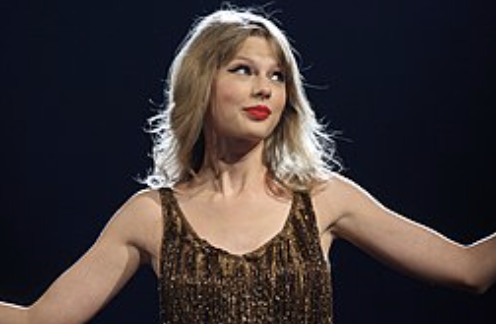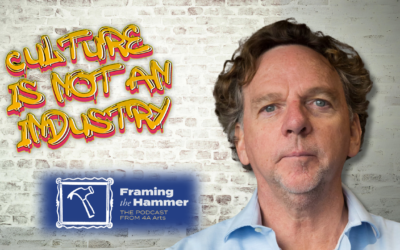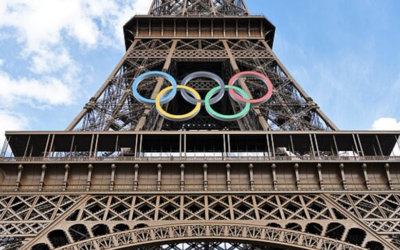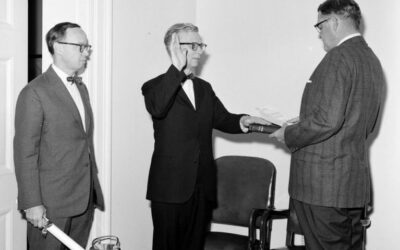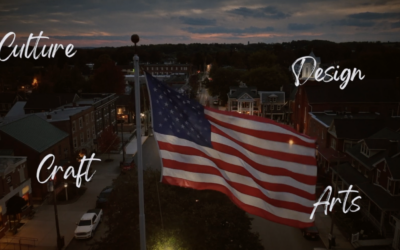If you do not have a tween in your household, don’t sport a friendship bracelet or, well…just don’t care, you might have missed that Taylor Swift has added another 16 songs to her musical canon with her album that dropped last night at midnight, “Tortured Poets Department.” (Make that 31 songs on the “Anthology” version of the album.) Pretty amazing that she wrote, produced, and recorded another album all during the same time she’s boosted the economies of dozens of global cities, dominated the gossip pages, and allegedly had plans to hijack the Super Bowl news cycle.
But it’s hard not to appreciate the Swiftie movement. A few weeks ago, Ray Dalio, an American hedge fund manager, posted on the social media site X a selfie at a Taylor Swift concert stating, “@taylorswift13 for President!…she can bring together Americans and people in most countries much better than either of the candidates, and that bringing people together is the most important thing. Watching this concert with people from all over the world made me and them feel good and connected and reminded me how powerful that universal culture is.”

Mr. Dalio is accurate about “how powerful that universal culture is,” but I’d even argue that Ms. Swift is arguably more influential (and trusted) than the US President. Why would she opt for such a demotion?
Most importantly, Mr Dalio is correct: the comradery and love that people feel in a concert, be it a middle school band, folk festival, or Beyoncé tour, is infectious and unifying. But it might be less the artist than music in general, and might be less music than art in general.
In the titular song on the new album, Taylor name-drops bygone American artistic legends like Dylan Thomas and Patti Smith, exposing younger listeners to artists (albeit tortured) of another era, while illuminating their status as thinkers and cultural icons. She’s not singing about politics or wars, she’s conjuring deep philosophers, critical thinkers, legendary artists (and the Chelsea Hotel, another monument to American artistic expression). And she’s also mocking the “tortured poet” vibe and lamenting the lack of simple joys. Taylor does all that. Poetry does all that. Art does all that.

Art is the magical element that unites people and heals us mentally, physically, and socially. I’d wager Mr. Dalio would give up some of his hedge fund fortune to feel happier on a daily basis, and spread that happiness to others. So why wouldn’t American leaders prioritize art to heal our democracy, our society, our small towns, and our spirit? Put money where Mr. Dalio’s tweet states what should be prioritized in our society because of “how powerful that universal culture is.”
Further, in our fragmented, fragile democracy, Taylor and artists of her ilk may play critical roles in preserving our system. A simple social media posting might (hopefully) inspire hundreds of millions of young people to vote. And political engagement is critical for any kind of reforms demanded by fatalistic and cynical non-voters.
Further, in our fragmented, fragile democracy, Taylor and artists of her ilk may play critical roles in preserving our system. A simple social media posting might (hopefully) inspire hundreds of millions of young people to vote. And political engagement is critical for any kind of reforms demanded by fatalistic and cynical non-voters.
Science even supports this proposal! Studies show that art of all kinds has a unifying effect on our mental health and human physical health as positive endorphins are created. Art also helps curb the feelings of loneliness pervasive throughout our culture. Furthermore, (and astoundingly), this biological change affects humans whether they are making the art or experiencing (watching) the art. Isn’t that just…magical?
But back to money…
Beyond “Lavender Haze” feelings to cold hard cash, creativity is also an unparalleled force for economic growth and innovation. The creative economy (meaning the workforce reliant upon creative expression for success…from chefs to graphic designers to museum security guards) employs 4.6 million workers and contributes more than one trillion dollars to the GDP. This economic impact is greater than the transportation, utilities or education industries, and outpaces American agriculture and mining combined. Creativity is more than healing entertainment. It’s big, big business.
An economic impact study on theater in Chicago’s “Loop” showed an extra $12 net revenue for every $1 spent on theater tickets. That extra money spending means $80 million pumped into the Loop economy in the form of restaurants, bars, parking structures, babysitters, and Ubers. Arts actually subsidize the economy surrounding a cultural institution.
Back to the music touring circuit, studies show spending of $300 for every $100 spent on arena concerts. “Swiftonomics” saw even larger spikes of “Eras” tour spending as Swifties dropped an estimated $1,300-$1,500 on shopping, dining, hotels, and even parking. In short, the “Eras” tour pumps hundreds of millions of dollars into a local economy in one weekend, the equivalent of the Super Bowl for a city’s economy, except that this “Super Bowl” repeated fifty-three times in twenty different cities.
But even cities skipped by Eras Tour trucks boosted local economies.
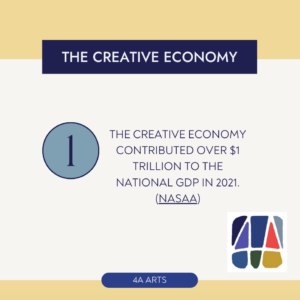


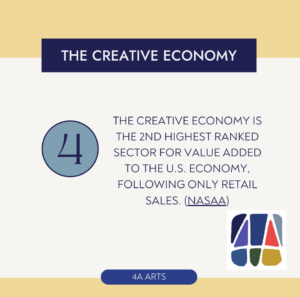
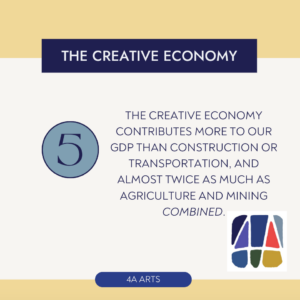
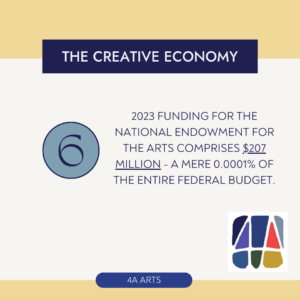
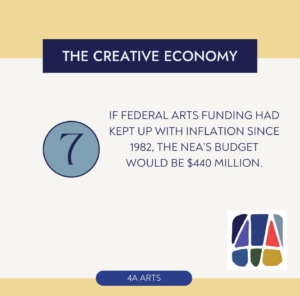
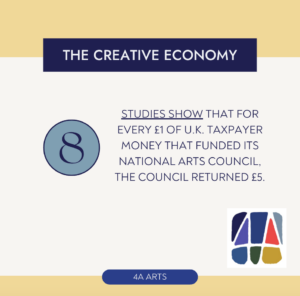
On the public investment side, a UK study found that for every £1 of taxpayer money invested by the UK Arts Council, a £5 return on investment returned to the national treasure; in 2013, that amounted to an added £2.35 billion in the UK national treasury. When governments invest in creativity, it’s possible to see as much as a 500% ROI.
Then there are adjacent economic factors. Arts and culture businesses are “substantive innovators” spurring economic opportunity; artists are 3.6 times more likely than average to be self-employed creating jobs; and the characteristics that define arts workers – creativity, innovation, and curiosity – “are vital for starting a new [entrepreneurial] venture.” To this point, creative workers in Cleveland contributed to infrastructure with the town’s decaying Waterloo Road.
Economic prowess is found when creativity is fostered in big cities, but in particular it helps small towns and rural areas. “You can do all the infrastructure investment but if you aren’t doing cultural investment you will not have a sustainable community,” says Charles Fluharty, CEO of the Rural Policy Research Institute (RUPRI). Such investment reduces “brain drain” and gives incentives and opportunities for creative minds to stay local.
And then there’s soft power. What can help us in international competition with China, Russia, or existential battles with A.I.? It’s not missiles, it’s the innovation coming from American culture. Unfortunately, America’s standing in soft power has fallen over the past ten years. But investment in our creative economy could help achieve greater worldwide freedom and peace than missiles and submarines. And Taylor Swift’s “Tortured Poets Department” is yet another boost to American soft power.
Finally, there are all the ways greater public investment in American arts and creativity could curb climate change, medical costs, crime, and of course enhance education.
So Mr. Dalio is right about the power of culture bringing us together. It’s a uniter, not a divider. And if our elected leaders at the local, state, and national levels would prioritize American creativity commensurate with its impact on the economy at large, we’d take huge high-heeled strides just like Tay Swizzle down a concert catwalk stage toward a future of thrilling possibilities.
Swiftie or not, one has to admit that Taylor Swift just keeps writing and creating poetry and music out of her own life, imagined lives, and the experience it is to be a woman in the United States in 2024. She’s obviously found her niche, but what if Ms. Swift reached for even more? Would President Swift bring together the people, or divide us even further?
Maybe she’s more of a Dolly Parton icon – one who transcends politics, and yet subtly signals her feelings about the state of the world.
Regardless, any president should prioritize the arts – for the sake of our wellbeing, economy, communities and democracy.


